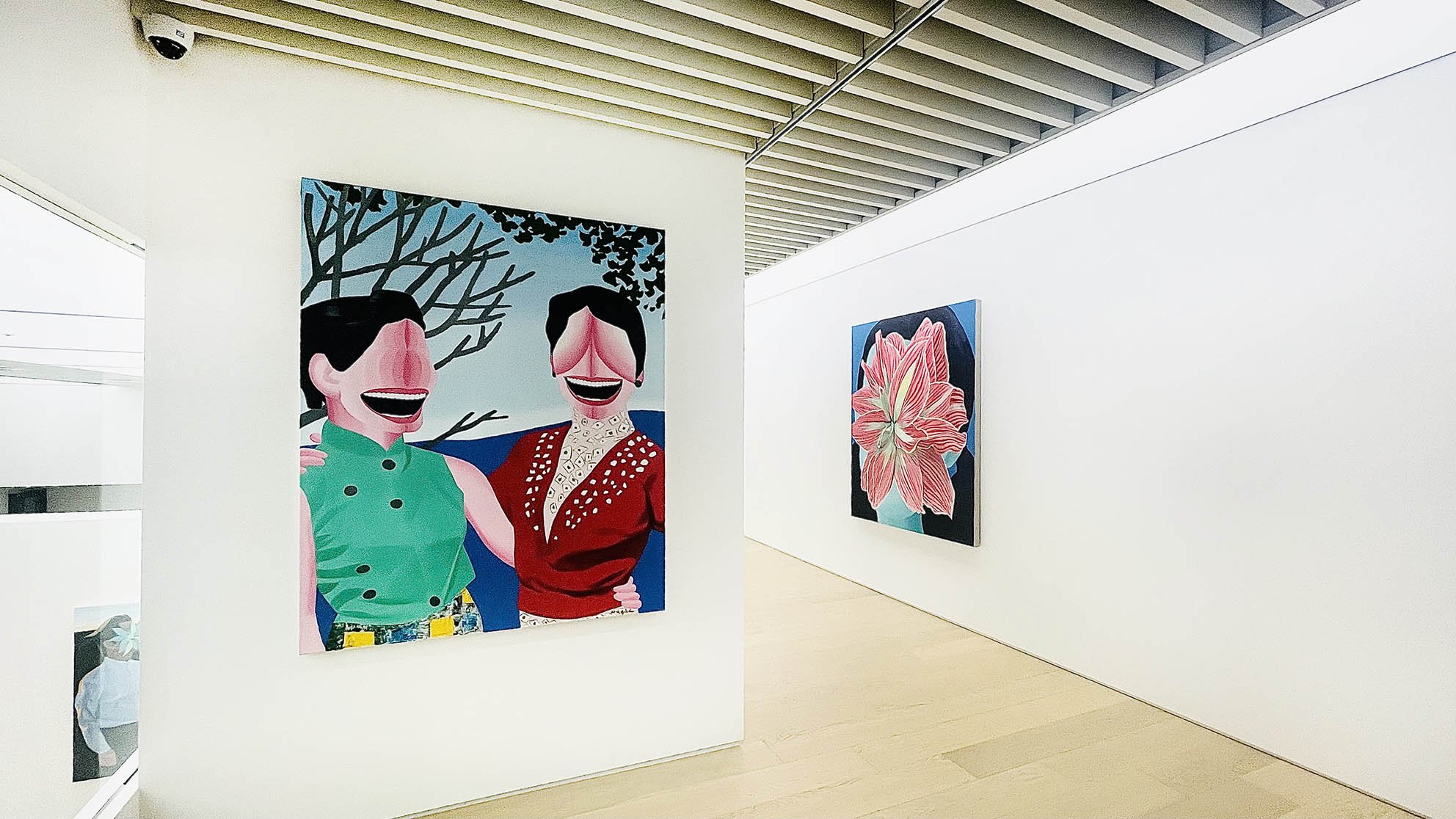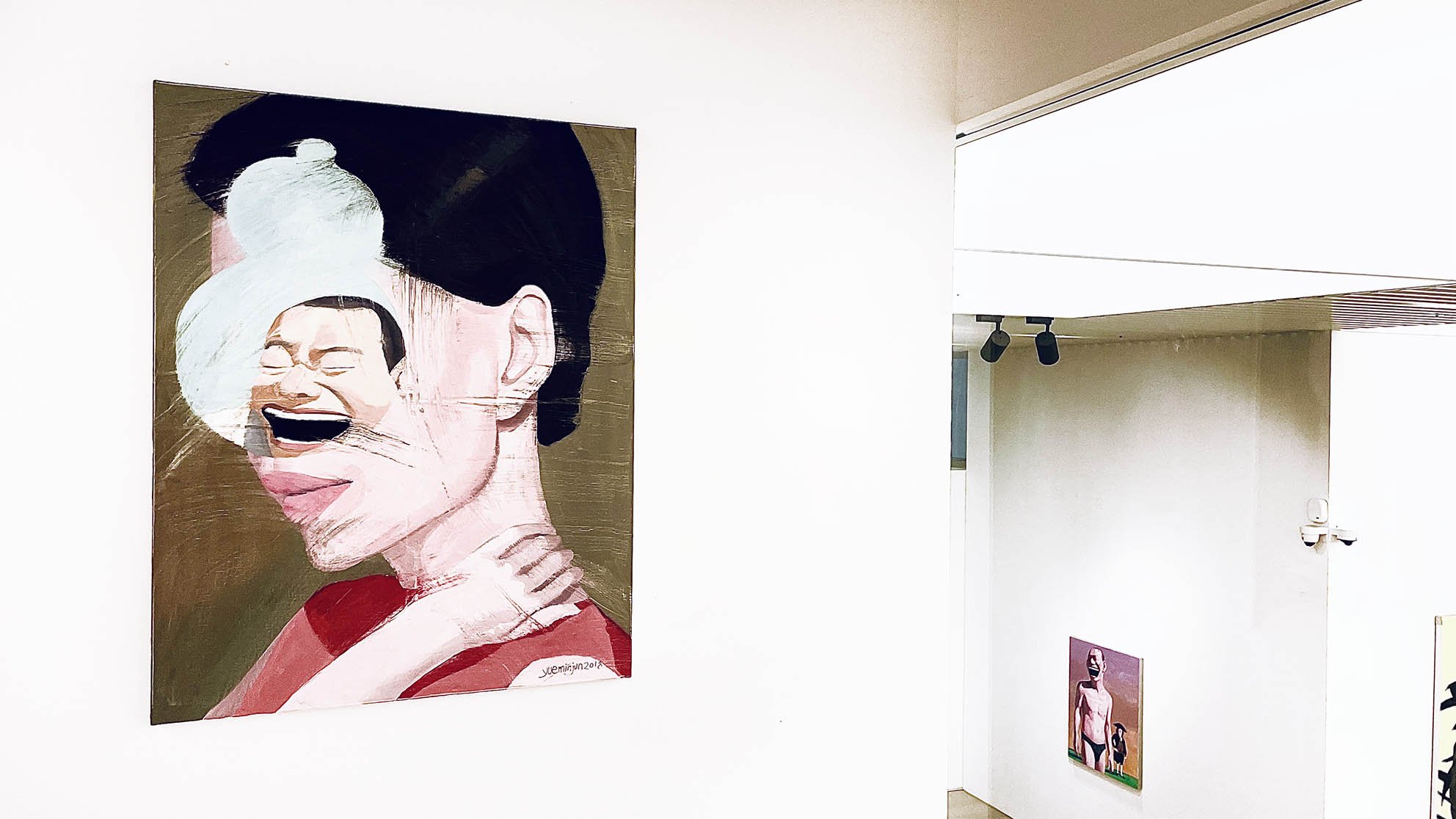Yue Minjun Solo Exhibition
Exhibition Dates. 5 Sept - 14 Oct 2023
at Tang Contemporary, Seoul, South Korea
Artist. Yue Minjun @yueminjun001
Post-1989 & the Emergence of Neo-Liberalism
As we all know, the year 1989 was when overwhelming changes erupted simultaneously in both the West and the East. The collapse of the Berlin Wall, the dissolution of the Soviet Union, and the Internet Revolution were epochal events of global proportion, which could not be explained by a paradigm shift alone. So, historians regard 1989 as another watershed in world history, which is comparable to the year 1789 when the French Revolution broke out. The global expansion of capitalism brought about across-the-board opening-up and change across national border, capital, market, and labor. Airports were packed with international flights and cities were overflown with foreign tourists and cross-border goods. From then on, internationalism based on national states was revamped into globalism regarding the entire globe as a basic venue of reasoning. Accordingly, the mass locked behind the fence of the national border faded into the mists of history and the multitude, globally connected by the Internet and smartphone beyond national, ethnic, racial and religious identities emerged as the principal agent of a new era. The multitude came to the fore of the history as the messiah who would hold capital in check and save the world. As described above, the two pillars underpinning post-1989 are the rise of globalism as a ‘world system’, and the emergence of the ‘multitude’ epitomizing the ‘solidarity of world citizens’ who would check and criticize it. The past three decades that we have experienced are deeply interwoven with such historic changes of global connotation. As the whole world has gradually indulged in the sweet sap of neo-liberalism, examination and criticism from the solidarity of world citizens has come into play just as actively, which enabled over 200 international art biennials to spring up during this period.
China’s Avant-Garde & Global Art
As Saskia Sassen said, the ‘global cities’ born after 1989 are the places where political, economic, and cultural powers converge most intensely. Through global expansion of capitalism that proceeded concurrently in the West and the East, China’s contemporary art rapidly rose to the mainstream of international art industry as global cultural power was relocated. During this time, U.K.’s YBAs, Germany’s Leipzig School, and India’s contemporary art scene became the new center of international art industry, along with China’s avant-garde. Out of the four, China’s avant-garde occupies a highly important position, as it is the first case in which a non-western art movement plays an enormous influence in both biennials and art markets. China avant-garde, broadly categorized into ’cynical realism‘ and ’political pop‘, is shaped primarily around self-reflection on and criticism against all ideologies and social formations experimented by mankind in the last century. Artists representing China’s avant-garde, including Yue Minjun, belonged to the generation that experienced the social development with every fiber of their body at the pinnacle of their youth, and have characterized the context and form of China’s avant-garde for the past three decades.
From ’Cynical Realism’ to ‘Magic Realism’
Today’s shockwave is directly connected with all individuals in the planet. It is an issue that cannot be avoided by any means. As such, artists are seriously responding to this stern warning sent by the nature to humankind. The images in Yue Minjun’s works are smiling like a bursting flower bud. They seem a bit off the stereotypical content and form epitomizing ‘cynical realism’ . For the past 10 years, he focused on portraying flower, death, or void. From then on, he discarded China’s avant-garde that he represented, and liberated himself from its limitations. And along with Lao-Zhuang and neo-materialistic insight, he is enjoying freedom while traveling between plants and animals, life and death, in the clouds or in the water. He has enveloped from ‘criticism and resistance’ to the wider and loftier dimension of ‘co-existence and symbiosis’. In fact, envelopment is the fundamental essence of existence for all lives. Just like a fetus in the womb of a mother, a tall tree crouching in a tiny seed, or a caterpillar to morph into a beautiful butterfly, he migrated to ‘magic realism’, harboring ‘cynical realism’ as it is. Although all previous avant-garde could only be found in museums today, Yue Minjun conceived a new life in his works of art through envelopment. I came to realize that nature might be suggesting a ‘utopia of symbiosis’. Just like how Buddhism taught us that we can be reborn everyday if we would like to, and the ultimate goal of asceticism is the ‘samsara of current life’, Yue Minjun shows us that ‘utopia of symbiosis’ is possible to exist in this world. It reminds us that this is not a science fiction, a myth or metaphysics, but a reality itself. As an old friend of him, I congratulate him on his new journey, with profound trust. I hope every visitor of this exhibition could do the same.
Text by Tang Contemporary - Photographed by Nani P - Watch the video reel here via @nani.visit

















